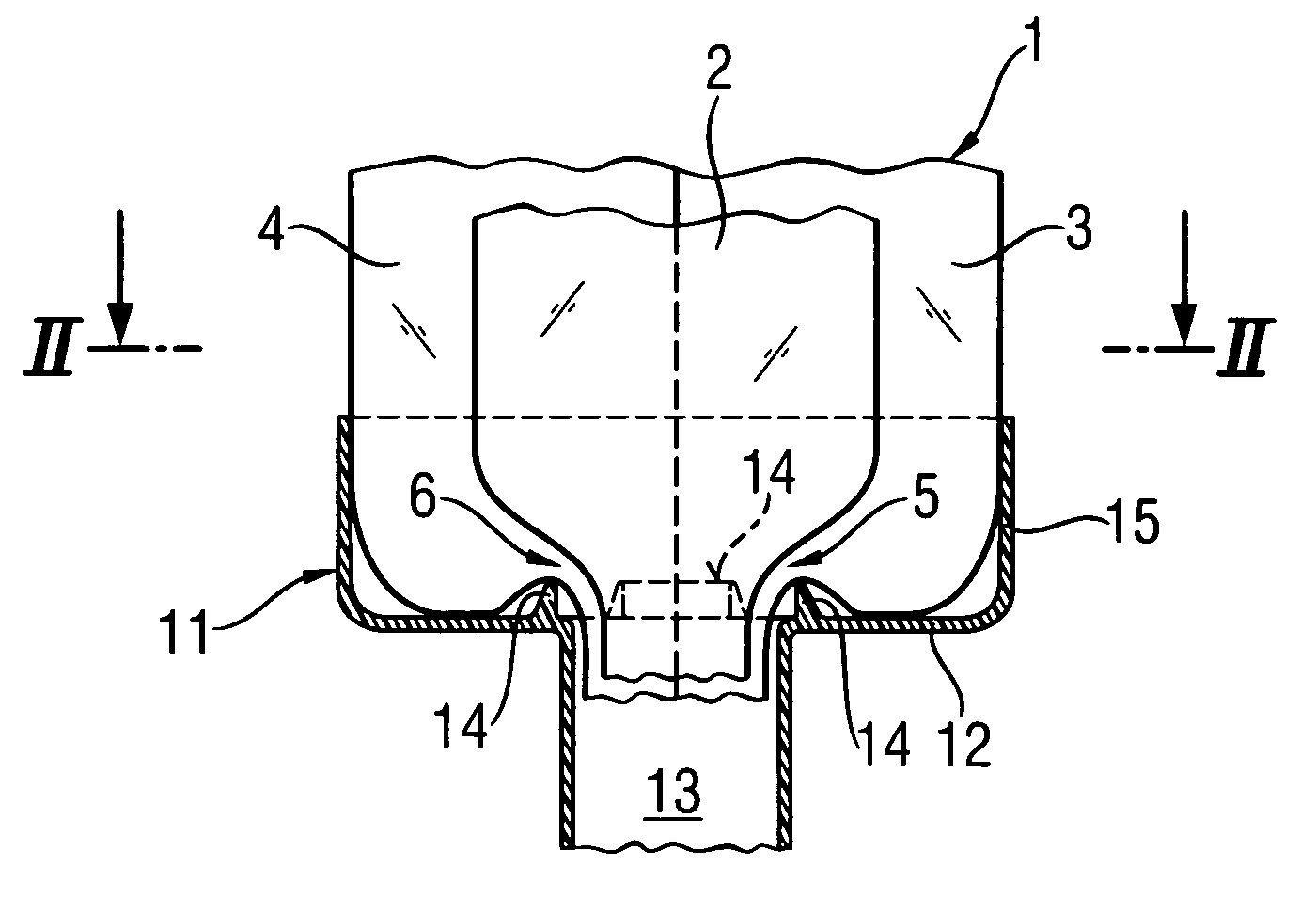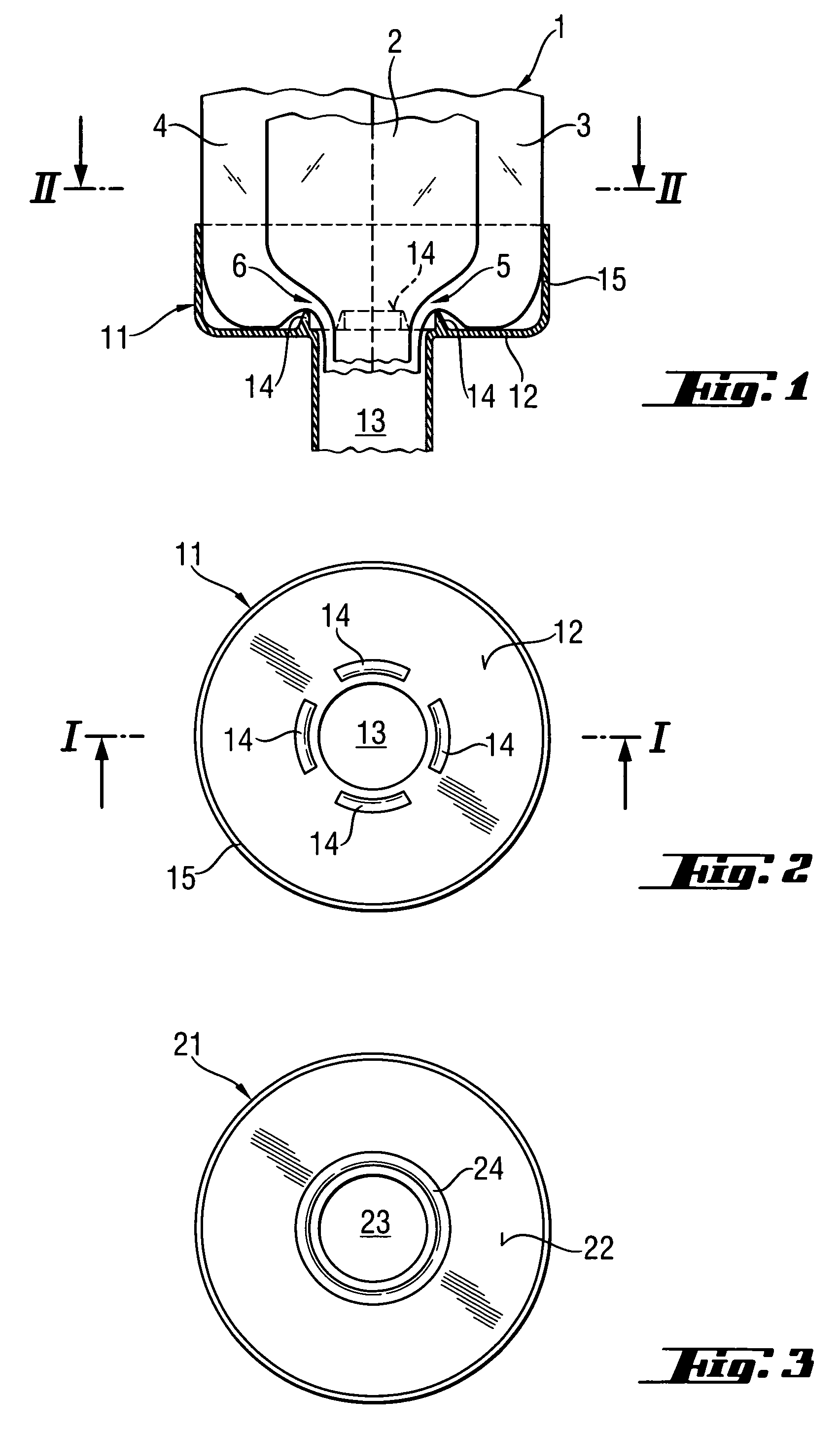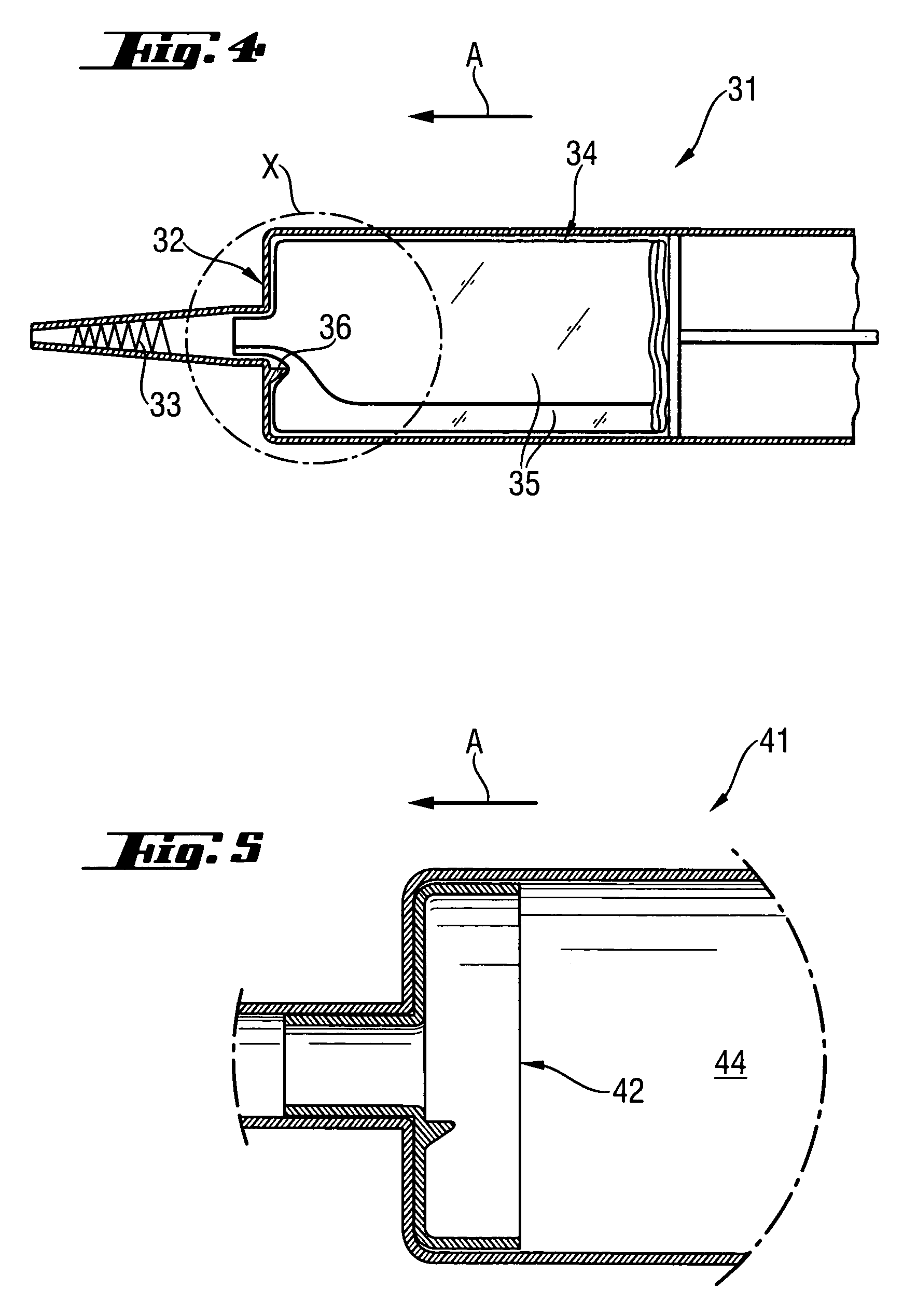Head part for a multi-chamber tube bag
a multi-chamber, tube bag technology, applied in the direction of liquid dispensing, containers, diagnostics, etc., can solve the problems of large discrepancies in the mixing ratio, general prior art disadvantages, and malfunctions of the press-out device, and achieve the effect of simple and economical production and constant mixing ratio
- Summary
- Abstract
- Description
- Claims
- Application Information
AI Technical Summary
Benefits of technology
Problems solved by technology
Method used
Image
Examples
Embodiment Construction
Detailed Description of the Preferred Embodiments
[0028]FIGS. 1 and 2 show a head part 11 according to the invention which is glued to a multi-chamber tube bag 1 on the work side. The multi-chamber tube bag 1 for a three-component mass has a main chamber 2 and two secondary chambers 3 and 4 arranged at the outer circumference of the multi-chamber tube bag 1. In this embodiment example, the multi-chamber tube bag 1 has a circular cross-sectional surface in cross section.
[0029]The head part 11 has a disk-shaped contact surface 12 and a press-out opening 13. A connection for a mixer element which can be screwed on, for example, can be provided at the press-out opening 13. Further, the head part 11 has a collar 15 which at least partially encompasses the end area of the multi-chamber tube bag 1. Four raised parts 14 which are constructed as projections and which are oriented in the direction of the multi-chamber tube bag 1 are formed at the contact surface 12. The raised parts 14 narrow ...
PUM
 Login to View More
Login to View More Abstract
Description
Claims
Application Information
 Login to View More
Login to View More - R&D
- Intellectual Property
- Life Sciences
- Materials
- Tech Scout
- Unparalleled Data Quality
- Higher Quality Content
- 60% Fewer Hallucinations
Browse by: Latest US Patents, China's latest patents, Technical Efficacy Thesaurus, Application Domain, Technology Topic, Popular Technical Reports.
© 2025 PatSnap. All rights reserved.Legal|Privacy policy|Modern Slavery Act Transparency Statement|Sitemap|About US| Contact US: help@patsnap.com



